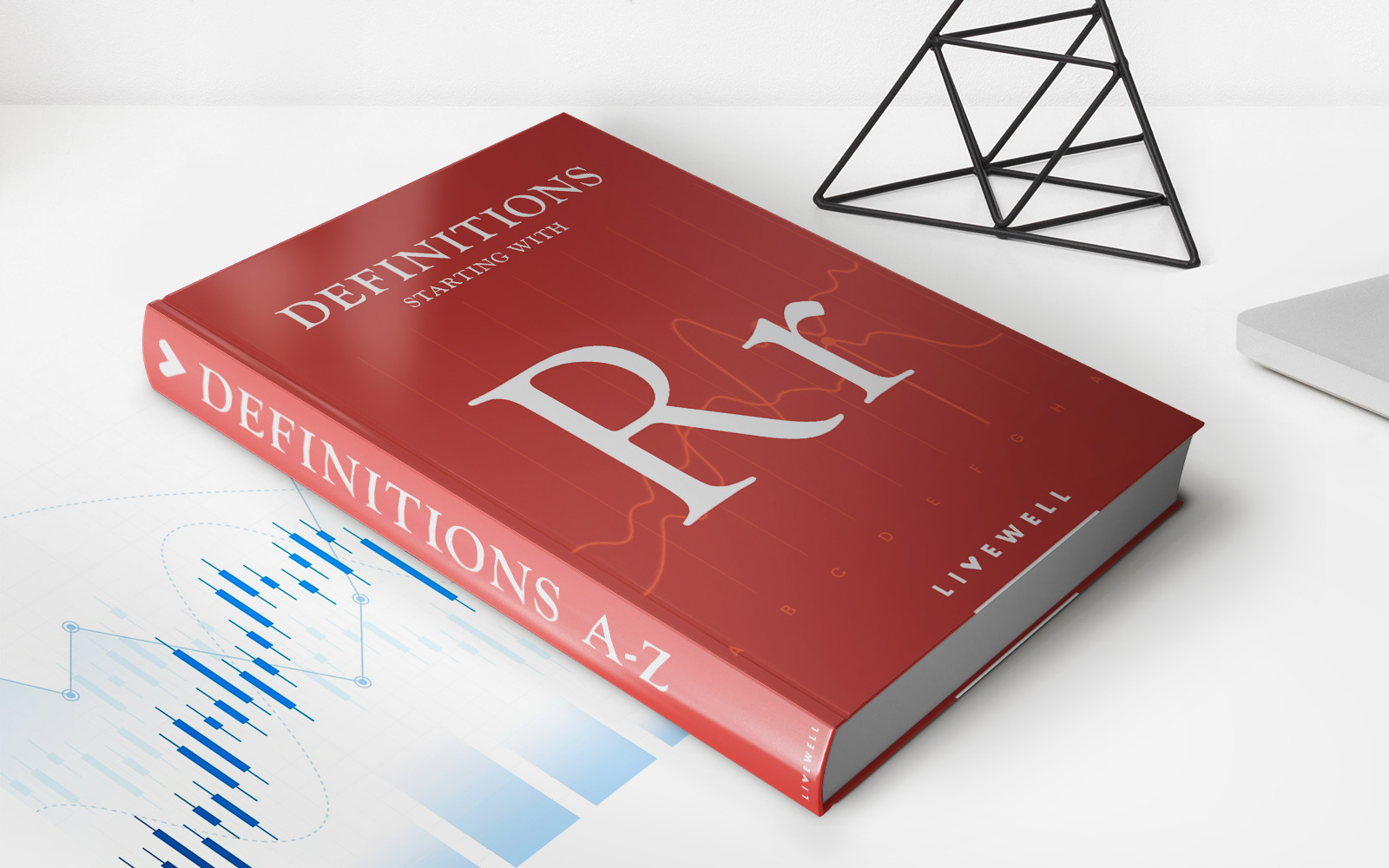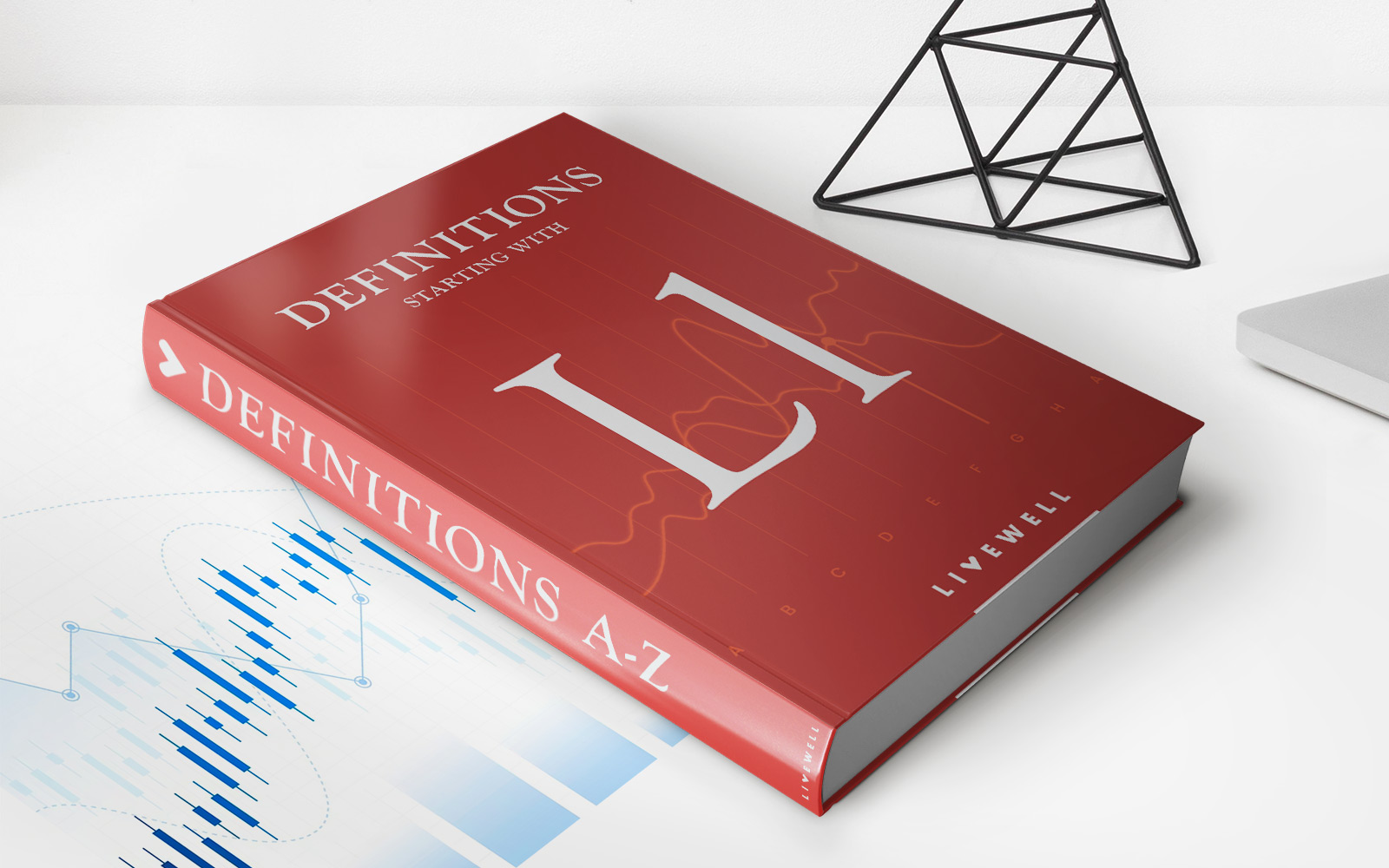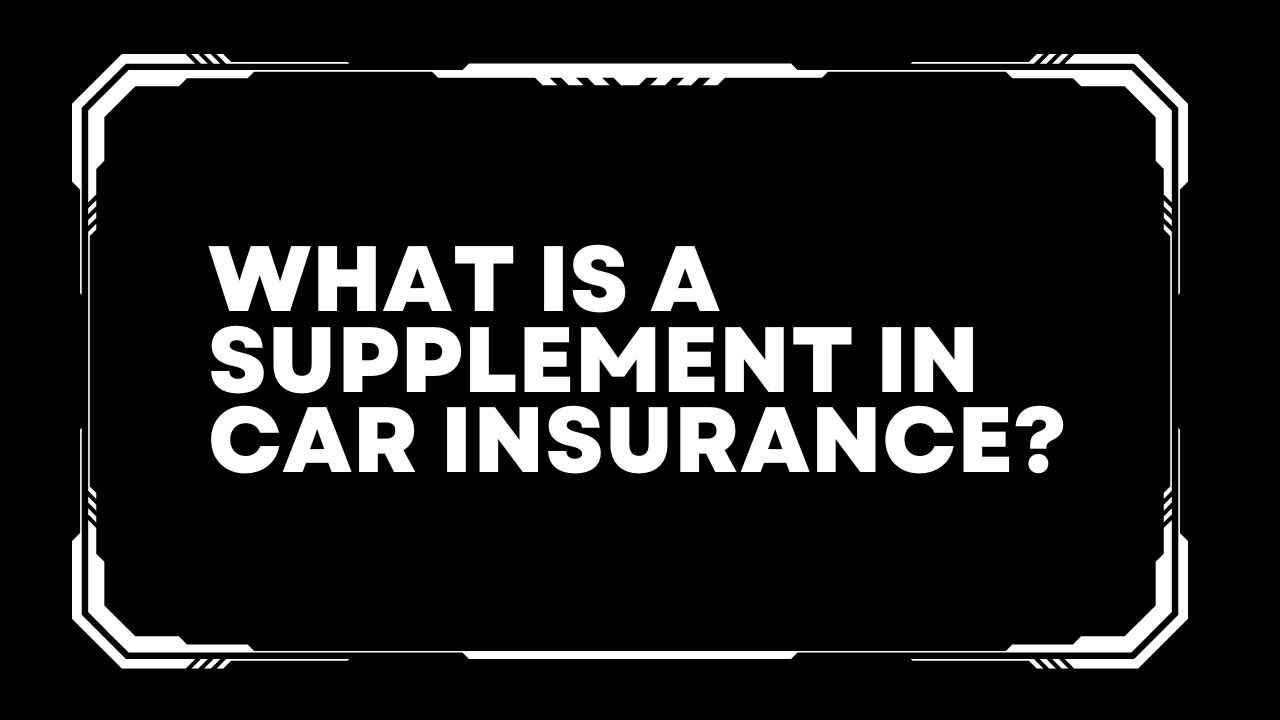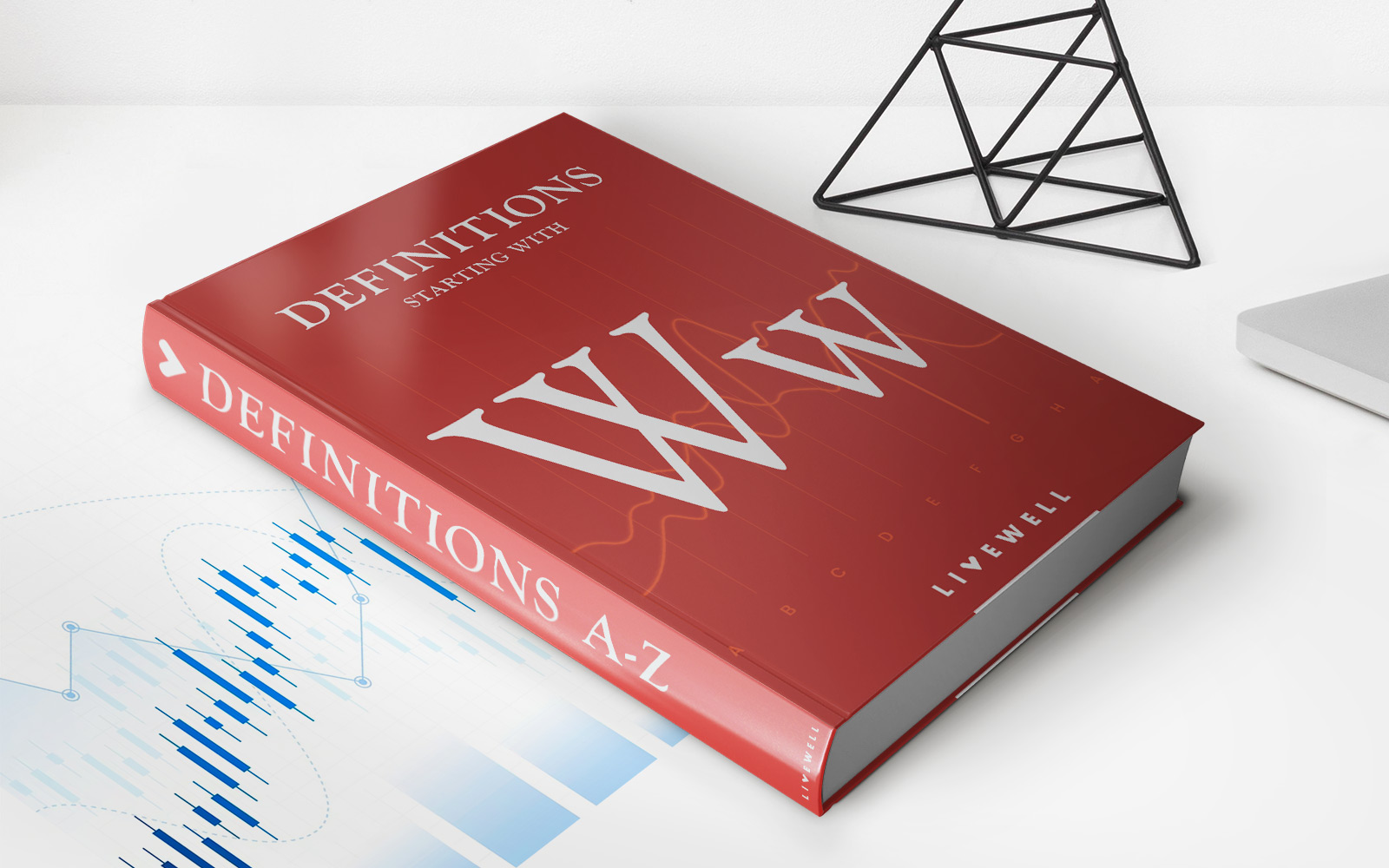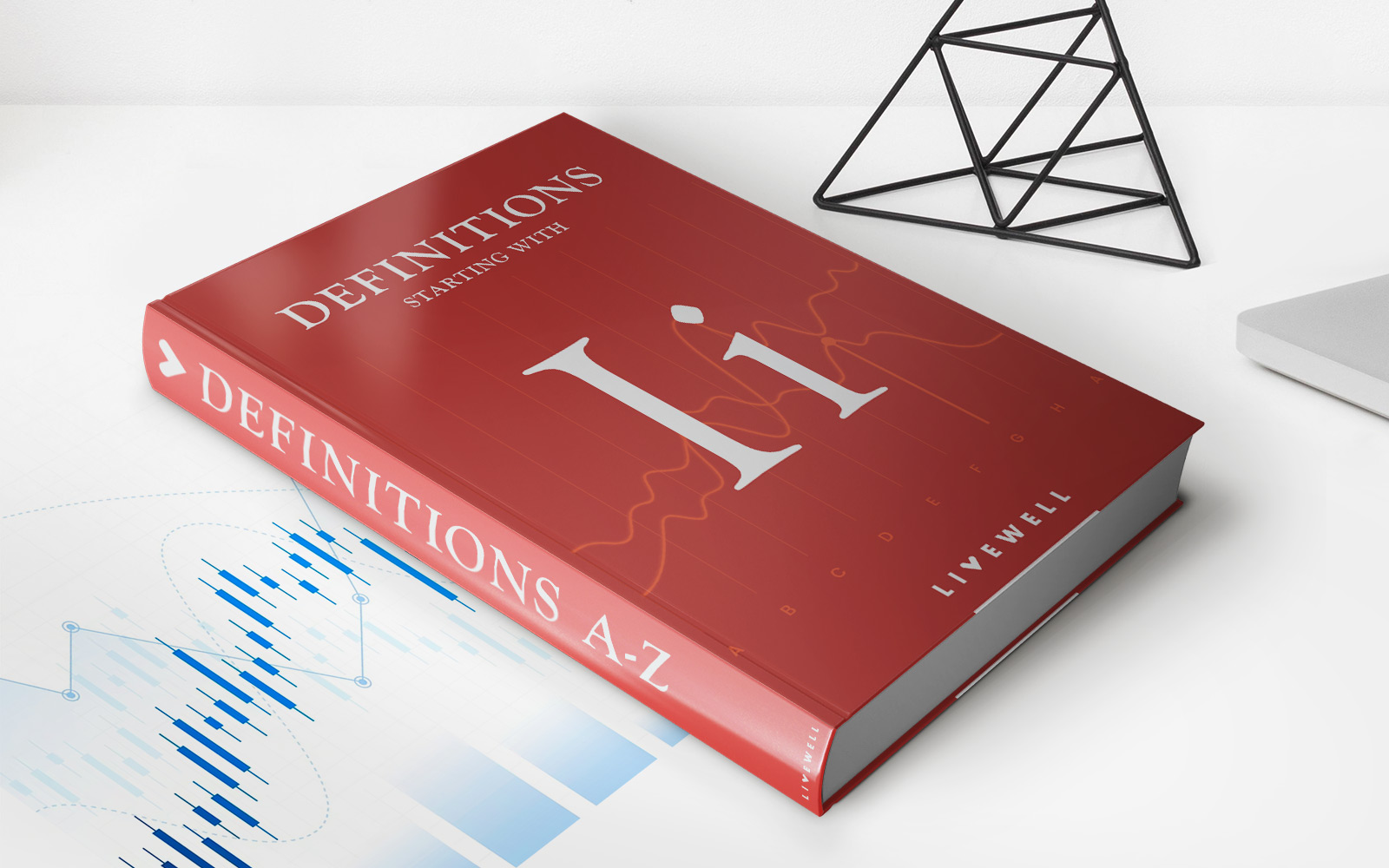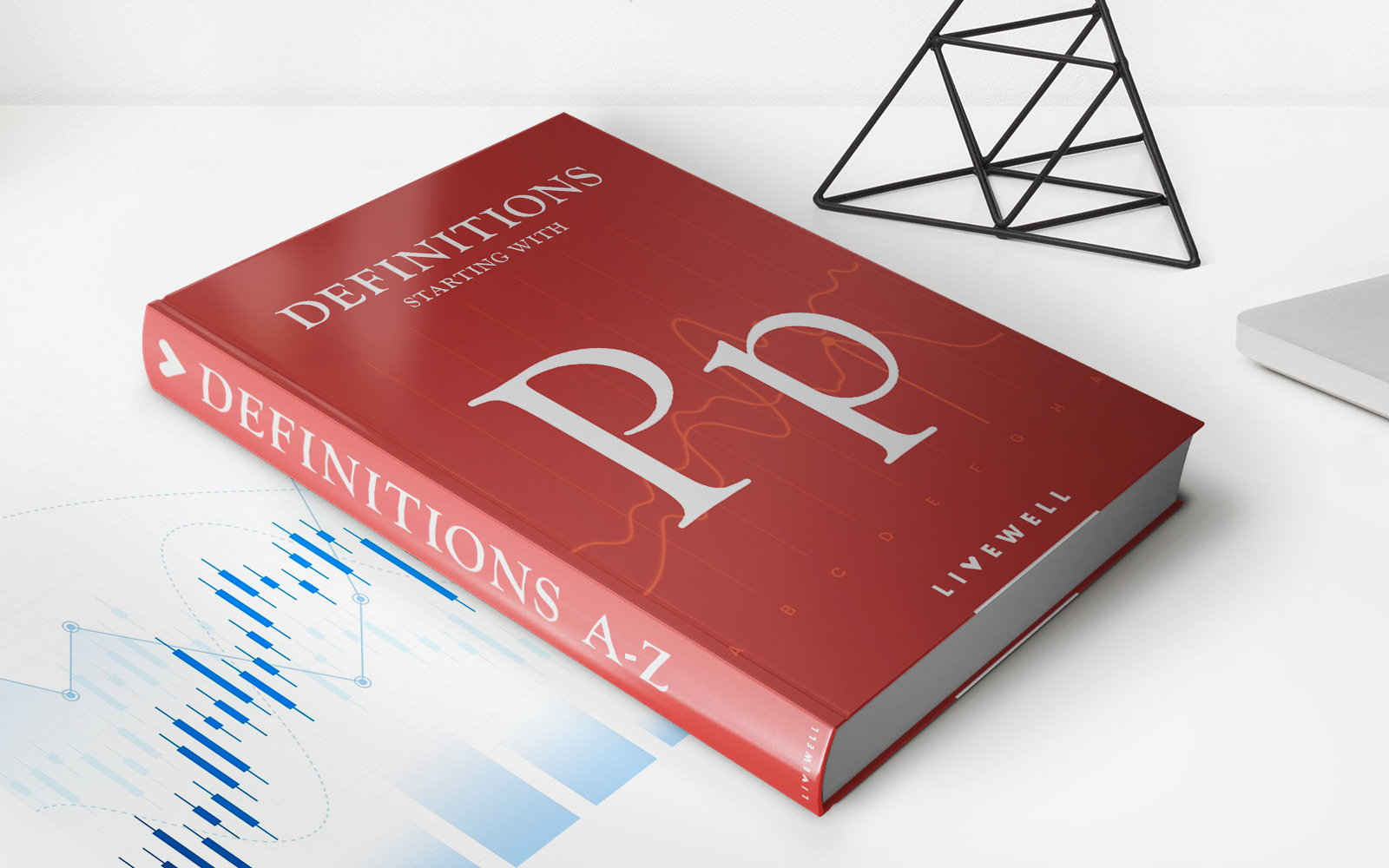

Finance
What Is Loss Payee Auto Insurance
Published: October 6, 2023
Discover the importance of loss payee auto insurance in protecting your financial interests. Learn how this type of coverage can safeguard your assets and provide peace of mind in unforeseen events.
(Many of the links in this article redirect to a specific reviewed product. Your purchase of these products through affiliate links helps to generate commission for LiveWell, at no extra cost. Learn more)
Table of Contents
- Introduction
- Definition of Loss Payee Auto Insurance
- Understanding Loss Payee Coverage
- Scope of Loss Payee Auto Insurance
- Benefits of Loss Payee Auto Insurance
- Eligibility Criteria for Loss Payee Coverage
- How to Add Loss Payee to Your Auto Insurance Policy
- Differences between Loss Payee and Additional Insured
- Frequently Asked Questions (FAQs)
- Conclusion
Introduction
Welcome to the world of Loss Payee Auto Insurance! If you are in the market for car insurance or are curious about different types of coverage, then this article is for you. Loss Payee Auto Insurance is an important aspect of protecting your vehicle and ensuring financial security in the event of an accident or loss.
When it comes to auto insurance, many people are familiar with terms like liability coverage, collision coverage, and comprehensive coverage. However, Loss Payee Auto Insurance can often be overlooked or misunderstood. In this article, we will delve into the details of Loss Payee coverage, including its definition, scope, benefits, and eligibility criteria.
Loss Payee Auto Insurance is a type of coverage that provides financial protection to a specific individual or entity (known as the loss payee) in the event of damage or loss to a vehicle. This coverage is typically associated with loans or leases where the lender or lessor has a vested interest in the vehicle and wants to ensure that it is adequately protected against any potential risks.
Loss Payee coverage provides added security to the lender or lessor by ensuring that any insurance claim payout is directed towards them, rather than solely the policyholder. This ensures that the financial interest of the lender or lessor is protected, as they have a financial stake in the vehicle and want to mitigate any potential losses that could arise from its damage or loss.
Definition of Loss Payee Auto Insurance
Loss Payee Auto Insurance can be defined as a type of insurance coverage that safeguards the interests of the lender or lessor in a vehicle. When someone finances or leases a vehicle, the lender or lessor often requires the borrower or lessee to obtain Loss Payee coverage. This ensures that the lender or lessor is protected against any potential damage or loss to the vehicle.
In a Loss Payee Auto Insurance policy, the lender or lessor is listed as the loss payee. This means that in the event of an accident, theft, or total loss of the vehicle, the insurance claim payout will be directed to the loss payee, rather than solely to the policyholder. This is important because it ensures that the lender or lessor’s financial interest in the vehicle is protected.
Loss Payee Auto Insurance is commonly associated with auto loans and vehicle leases. When a person finances a car or obtains a lease, the lender or lessor technically owns the vehicle until it is fully paid off or the lease term ends. If the vehicle is involved in an accident or gets stolen, it could result in a loss for the lender or lessor. Loss Payee coverage provides financial protection to the lender or lessor in such cases.
It is important to note that Loss Payee Auto Insurance is different from regular auto insurance coverage. Regular auto insurance covers the vehicle owner or policyholder, while Loss Payee coverage specifically focuses on protecting the interests of the lender or lessor. Although the policyholder will still have coverage for their own liability and any damages they may cause, the insurance claim payout will be directed to the loss payee to satisfy any outstanding debts or financial obligations related to the vehicle.
Loss Payee Auto Insurance is a critical component in ensuring that lenders and lessors are protected from financial loss when financing or leasing vehicles. By requiring borrowers or lessees to obtain this coverage, lenders and lessors can have peace of mind knowing that their investment in the vehicle is safeguarded.
Understanding Loss Payee Coverage
To fully understand Loss Payee Auto Insurance, it is essential to comprehend the scope of coverage it provides. Loss Payee coverage extends beyond the traditional auto insurance coverage and specifically focuses on protecting the interests of the lender or lessor.
Loss Payee coverage typically includes protection against various risks, such as collisions, theft, vandalism, fire, and natural disasters. In the event of any of these covered events, the loss payee (the lender or lessor) will receive the insurance claim payout to satisfy any outstanding debts or financial obligations related to the vehicle. It ensures that the financial interest of the lender or lessor is safeguarded, as they may have a significant investment tied up in the vehicle.
Loss Payee Auto Insurance coverage is often required by lenders or lessors to mitigate any potential financial loss in the event of an accident or loss of the vehicle. Since the lender or lessor technically owns the vehicle until it is fully paid off or the lease term ends, they want to ensure that they can recoup any outstanding debts owed by the borrower or lessee in the event of damage or loss.
It is important to note that Loss Payee coverage does not protect the borrower or lessee in the same way that regular auto insurance coverage does. The borrower or lessee should still obtain their own comprehensive insurance coverage that provides liability protection, covers medical expenses, and protects against damage to their own vehicle.
In addition to protecting the interests of the lender or lessor, Loss Payee Auto Insurance provides an added layer of protection for the borrower or lessee as well. By ensuring that the lender or lessor’s financial interest in the vehicle is protected, the borrower or lessee can have peace of mind and focus on enjoying their vehicle without worry.
It is important to carefully review the terms and conditions of a Loss Payee Auto Insurance policy to understand the specific coverage and limitations. Each policy may have unique features and requirements, so it is crucial to choose a policy that aligns with the needs and expectations of all parties involved.
Scope of Loss Payee Auto Insurance
The scope of Loss Payee Auto Insurance coverage can vary depending on the specific policy and the agreement between the lender or lessor and the borrower or lessee. However, there are certain common elements that are typically included in Loss Payee coverage.
One of the primary aspects of Loss Payee Auto Insurance is protection against physical damage to the vehicle. This includes coverage for accidents, collisions, theft, vandalism, fire, and natural disasters. If any of these events occur and result in damage or loss to the vehicle, the insurance claim payout will be directed to the loss payee (the lender or lessor) to satisfy any outstanding debts or financial obligations related to the vehicle.
Loss Payee coverage also includes liability protection. While the primary focus of this coverage is on protecting the lender or lessor, it may also extend to cover the borrower or lessee in terms of their liability for bodily injury or property damage caused to others while operating the vehicle.
Another important aspect of Loss Payee Auto Insurance is gap coverage. Gap coverage bridges the gap between the actual cash value of the vehicle and the amount owed on the loan or lease. In the event of a total loss, where the vehicle is deemed a write-off, the insurance claim payout may not be sufficient to cover the outstanding balance owed on the loan or lease. Gap coverage ensures that the lender or lessor is not left with a financial gap and that the remaining balance is paid off.
The scope of Loss Payee coverage may also include rental reimbursement, roadside assistance, and other additional benefits. These additional benefits can provide peace of mind and added convenience to both the lender or lessor and the borrower or lessee.
It is essential to review the terms and conditions of the Loss Payee Auto Insurance policy to fully understand the scope of coverage. Each policy may have specific limitations and exclusions that need to be considered. Working closely with an insurance professional can help ensure that the policy meets the specific needs of all parties involved and provides the necessary protection.
Benefits of Loss Payee Auto Insurance
Loss Payee Auto Insurance provides several important benefits to both the lender or lessor and the borrower or lessee. Let’s explore some of the key advantages of having Loss Payee coverage:
- Protection for the lender or lessor: Loss Payee coverage ensures that the financial interest of the lender or lessor is protected. In the event of an accident, theft, or total loss of the vehicle, the insurance claim payout is directed to the loss payee, allowing them to recover any outstanding debts or financial obligations associated with the vehicle.
- Safeguarding the borrower or lessee: While primary focus of Loss Payee coverage is on protecting the lender or lessor, it can also provide a level of protection to the borrower or lessee. By guaranteeing that the lender’s or lessor’s financial interest is secured, the borrower or lessee can have peace of mind knowing that they won’t face any potential legal or financial consequences stemming from the loss or damage of the vehicle.
- Gap coverage: Loss Payee Auto Insurance often includes gap coverage. In the unfortunate event of a total loss, where the vehicle is deemed a write-off, gap coverage helps bridge the gap between the actual cash value of the vehicle and the remaining loan or lease balance. This ensures that the borrower or lessee is not burdened with a large financial debt, as the insurance claim payout will cover the outstanding balance.
- Compliance with lender or lessor requirements: Many lenders or lessors require borrowers or lessees to obtain Loss Payee coverage as part of the loan or lease agreement. By complying with these requirements, borrowers or lessees can secure financing or leasing arrangements more easily, ensuring a smooth and hassle-free process.
- Added convenience: Loss Payee Auto Insurance policies often offer additional benefits, such as rental reimbursement and roadside assistance. These perks provide extra convenience and peace of mind to both the lender or lessor and the borrower or lessee, ensuring that they have support and assistance in case of emergencies or mechanical breakdowns.
It is important to remember that the specific benefits and coverage of Loss Payee Auto Insurance can vary depending on the policy and the terms agreed upon by the parties involved. Reviewing the policy details and consulting with an insurance professional will help determine the exact benefits that apply in a given situation and ensure that the coverage adequately meets the needs of all parties.
Eligibility Criteria for Loss Payee Coverage
To qualify for Loss Payee Auto Insurance coverage, certain eligibility criteria must be met. These criteria may vary depending on the insurance provider and the specific terms and conditions of the policy. Here are some common factors that may determine eligibility for Loss Payee coverage:
- Loan or lease agreement: Loss Payee coverage is typically associated with auto loans or leases. To be eligible for this type of coverage, there must be a valid loan or lease agreement in place between the borrower or lessee and the lender or lessor.
- Ownership: The lender or lessor must have a vested interest in the vehicle. This means that they hold the legal ownership of the vehicle until the loan is paid off or the lease term ends. Loss Payee coverage protects their financial interest in the vehicle.
- Vehicle value: The value of the vehicle may also be a factor in determining eligibility for Loss Payee coverage. Insurance providers may have minimum and maximum value requirements for vehicles to qualify for this type of insurance.
- Insurance policy: The borrower or lessee must have their own comprehensive auto insurance policy in place. Loss Payee coverage is an additional layer of protection that works in conjunction with the borrower or lessee’s own insurance policy.
- Insurance provider requirements: Each insurance provider may have their own specific eligibility criteria for Loss Payee coverage. It is essential to review the terms and conditions of the policy and understand the requirements set by the insurance provider.
It is important to note that Loss Payee coverage is not automatically included in all auto insurance policies. It is typically an additional endorsement or provision that must be added to the policy. Borrowers or lessees should communicate with their insurance provider and lender or lessor to ensure that Loss Payee coverage is included if required.
Consulting with an insurance professional can help navigate the eligibility criteria and ensure that all necessary steps are taken to obtain Loss Payee coverage. Additionally, it is crucial to thoroughly review the terms of the policy and understand the obligations and responsibilities of all parties involved to ensure a clear understanding of the coverage and its purpose.
How to Add Loss Payee to Your Auto Insurance Policy
If you have a loan or lease on your vehicle and need to add Loss Payee coverage to your auto insurance policy, the process is relatively straightforward. Follow these steps to ensure that Loss Payee is included in your policy:
- Review your loan or lease agreement: First, carefully review your loan or lease agreement to determine if Loss Payee coverage is required. Some lenders or lessors may have specific insurance requirements that must be met for the duration of the loan or lease term.
- Contact your insurance provider: Reach out to your insurance provider and inform them that you need to add Loss Payee coverage to your auto insurance policy. They will guide you through the process and provide the necessary information and documentation.
- Provide information about the loan or lease: Your insurance provider will likely request information about the lender or lessor, such as their name, address, and contact information. They may also require a copy of your loan or lease agreement to verify the specific details.
- Provide the necessary proof of insurance: Your insurance provider may also require you to provide proof of your existing auto insurance policy. This can be in the form of an insurance card or a declaration page that outlines the coverage you currently have.
- Review and sign any required documentation: Depending on your insurance provider, they may have specific forms or documents that need to be signed to add Loss Payee coverage to your policy. Carefully review these documents and ensure that you understand the terms and conditions before signing.
- Verify the details of the coverage: Once Loss Payee coverage is added to your policy, review the details to ensure that all relevant information is accurate. Confirm that the lender or lessor is listed as the loss payee and that the coverage amounts and deductibles align with the requirements set by your loan or lease agreement.
- Make necessary premium payments: Depending on your insurance provider’s payment schedule, ensure that you make the necessary premium payments to maintain your Loss Payee coverage. Failure to pay premiums could result in a lapse in coverage and potentially jeopardize your loan or lease agreement.
It is important to stay in communication with both your insurance provider and your lender or lessor throughout the process. This ensures that all parties are aware of the coverage being added and that the necessary documentation is properly submitted.
Remember, adding Loss Payee coverage to your auto insurance policy provides financial protection for both the lender or lessor and yourself. It ensures that the lender’s or lessor’s vested interest in the vehicle is safeguarded and that you comply with the terms of your loan or lease agreement.
Differences between Loss Payee and Additional Insured
While both Loss Payee and Additional Insured are terms commonly used in insurance policies, they serve different purposes and provide distinct forms of protection. Understanding the differences between the two can help clarify their roles and the coverage they offer. Here are the key distinctions between Loss Payee and Additional Insured:
- Beneficiary: In Loss Payee coverage, the loss payee is the beneficiary of the insurance policy. The policyholder’s insurance claim payout is directed to the loss payee to satisfy any outstanding debts or financial obligations related to the vehicle. On the other hand, an Additional Insured is someone added to the insurance policy who receives coverage and protection for their own liability in connection with the insured property or activity.
- Focus of coverage: Loss Payee coverage primarily protects the interests of the lender or lessor. It ensures that they are financially protected if the borrower or lessee is unable to fulfill their obligations in the event of a loss or damage to the vehicle. Additional Insured coverage, on the other hand, extends liability protection to individuals or entities other than the policyholder who may be directly or indirectly involved in a property or activity covered by the insurance policy.
- Relationship to the insured: In Loss Payee coverage, the loss payee is typically a separate entity from the policyholder. They have a financial interest in the insured vehicle but may not have any ownership or legal rights to the vehicle itself. In contrast, an Additional Insured is typically someone who has a direct relationship with the policyholder, such as a contractor, vendor, or business partner, and requires coverage for their own liability exposure related to the insured property or activity.
- Claim payout: In Loss Payee coverage, the policyholder’s insurance claim payout is directed to the loss payee to satisfy any outstanding debts or financial obligations related to the vehicle. The loss payee has a legal right to the insurance proceeds for their own financial protection. With Additional Insured coverage, the claim payout is typically directed to the policyholder, and the Additional Insured receives coverage and protection for their own liability, separate from the policyholder’s obligations.
- Scope of coverage: Loss Payee coverage typically focuses on protecting the lender’s or lessor’s financial interest in the insured vehicle. It often includes protection against physical damage and may also include liability coverage. Additional Insured coverage, on the other hand, provides liability protection specifically for the Additional Insured’s involvement in the insured property or activity, protecting them from claims or lawsuits related to their actions or responsibilities.
Understanding the differences between Loss Payee and Additional Insured can help policyholders and insurance recipients determine the appropriate coverage needed in different scenarios. It is essential to review and understand the specific terms and conditions of the insurance policy to ensure that the coverage meets the needs and requirements of all parties involved.
Frequently Asked Questions (FAQs)
1. What is the purpose of Loss Payee Auto Insurance?
Loss Payee Auto Insurance is designed to protect the interests of the lender or lessor in a vehicle. It ensures that they are financially protected in the event of damage or loss to the vehicle by directing the insurance claim payout to the loss payee.
2. Is Loss Payee coverage mandatory?
Loss Payee coverage is often required by lenders or lessors as a condition of financing or leasing a vehicle. It helps protect their financial investment in the vehicle and ensures that they can recover any outstanding debts or financial obligations if the vehicle is damaged or lost.
3. Who should obtain Loss Payee coverage?
The borrower or lessee of a vehicle is typically responsible for obtaining Loss Payee coverage. They are required to secure this coverage to protect the lender’s or lessor’s financial interest in the vehicle and comply with the terms of their loan or lease agreement.
4. Can I add Loss Payee coverage to an existing auto insurance policy?
Yes, most insurance providers allow you to add Loss Payee coverage to an existing auto insurance policy. Contact your insurance provider to inquire about the process and any specific requirements for adding Loss Payee coverage.
5. What is the difference between Loss Payee and Additional Insured?
Loss Payee coverage is specific to protecting the lender’s or lessor’s financial interest in the vehicle and ensuring that any insurance claim payout is directed to them. Additional Insured coverage, on the other hand, provides liability protection to individuals or entities other than the policyholder who are directly or indirectly involved in the insured property or activity.
6. Does Loss Payee coverage provide liability protection for the borrower or lessee?
Loss Payee coverage primarily focuses on protecting the lender or lessor’s financial interest in the vehicle. While it may provide some liability protection for the borrower or lessee, they should still obtain their own comprehensive auto insurance policy to ensure adequate liability protection for themselves.
7. Can Loss Payee coverage be transferred to a new owner?
Loss Payee coverage is generally specific to the borrower or lessee and the lender or lessor named in the loan or lease agreement. If the vehicle is sold or transferred to a new owner, the new owner will typically need to obtain their own auto insurance policy with Loss Payee coverage if required by their lender or lessor.
8. How can I find out if Loss Payee coverage is required for my loan or lease?
Review your loan or lease agreement or consult with your lender or lessor to determine if Loss Payee coverage is required. They will be able to provide you with specific information and requirements for obtaining this coverage.
9. Can I cancel Loss Payee coverage if I pay off my loan or lease early?
Once your loan or lease is paid off, Loss Payee coverage may no longer be required. However, it is important to confirm with both your lender or lessor and your insurance provider before making any changes to your auto insurance policy.
10. How can I ensure that Loss Payee coverage meets my lender’s or lessor’s requirements?
Review the terms and conditions of your loan or lease agreement and work closely with your insurance provider. They will help ensure that your Loss Payee coverage aligns with your lender’s or lessor’s requirements and provides the necessary protection for all parties involved.
Conclusion
Loss Payee Auto Insurance is a crucial component of protecting the financial interests of lenders and lessors in vehicles that are financed or leased. This specialized coverage ensures that in the event of damage, loss, or theft of the vehicle, the insurance claim payout is directed to the loss payee (the lender or lessor) to satisfy any outstanding debts or financial obligations related to the vehicle. By having Loss Payee coverage in place, lenders and lessors can have peace of mind knowing that their financial investments are safeguarded.
Additionally, Loss Payee coverage provides benefits to borrowers or lessees by providing an added layer of protection and compliance with the terms of their loan or lease agreements. It offers peace of mind to both parties involved in the financing or leasing process.
It is important to understand the scope and limitations of Loss Payee Auto Insurance and review the terms and conditions of the specific policy. Each policy may have unique requirements, eligibility criteria, and coverage details, so it is crucial to choose a policy that aligns with the needs and expectations of all parties involved.
If you are considering a loan or lease for a vehicle, or if you already have one in place, it is recommended to inquire with your insurance provider and lender or lessor about the requirements for Loss Payee coverage. Understanding the insurance needs and obligations will help ensure a smooth process and adequate protection for all parties.
Remember, Loss Payee Auto Insurance is just one piece of the puzzle in protecting yourself, your vehicle, and the financial interests of lenders or lessors. Always consult with an insurance professional to discuss your specific needs and find the right coverage to ensure a secure and worry-free driving experience.
